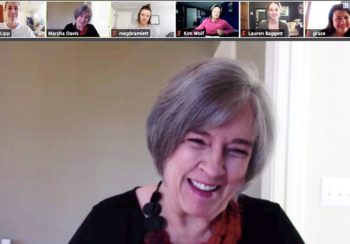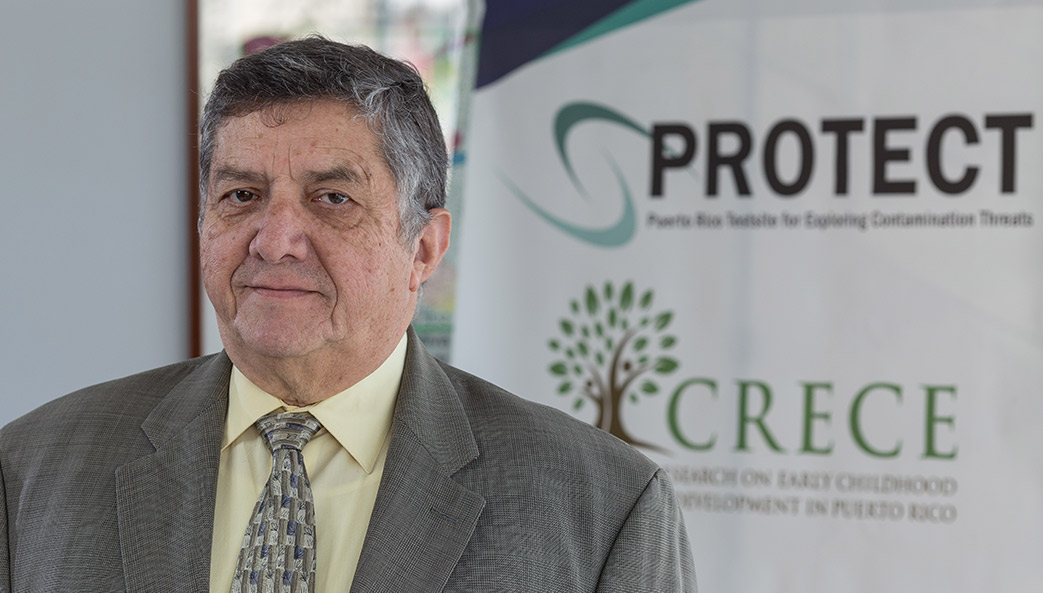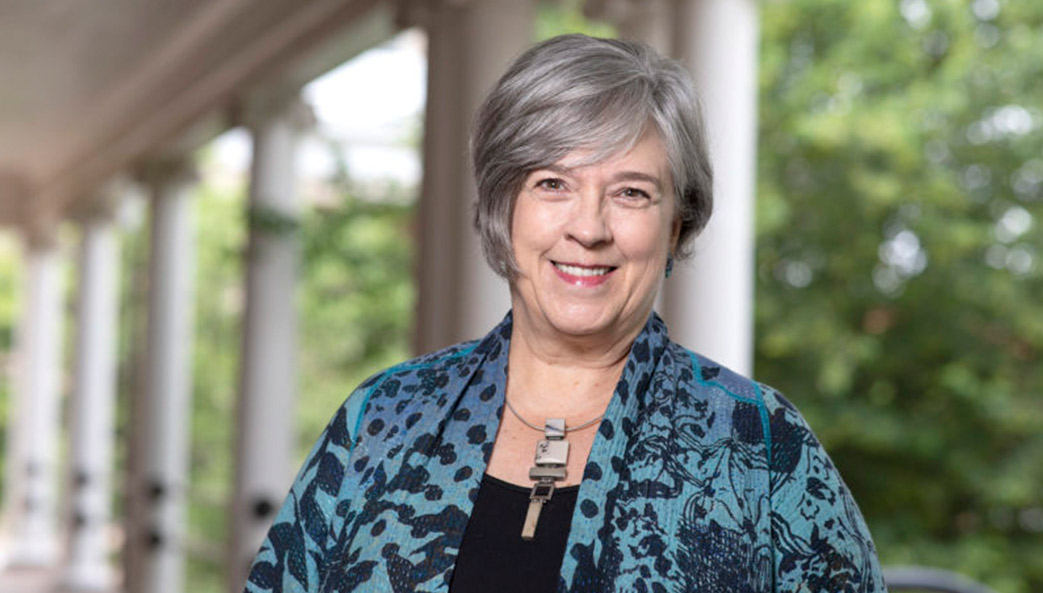In 1997, Glen Nowak interviewed for a director of communications position inside the Centers for Disease Control and Prevention’s National Immunization Program. He understood the value of the position, having spent years working with the CDC as a visiting communication scientist on projects involving HIV/AIDS education and prevention. During the height of the AIDS crisis in the early 1990s, he led a project that evaluated the effectiveness of public service announcements for the HIV hotline and helped coordinate a major project involving entertainment-education to educate young people with the entertainment industry in Hollywood.
“I’ve always been interested in how you persuade people,” said Nowak, now a professor and co-director of the Center for Health and Risk Communication (CHRC) in the University of Georgia’s Grady College of Journalism and Mass Communication. “It was more than just about providing people good information. It was about providing good information in a manner that gets attention and persuades people to take recommended actions.”
So, it came as a bit of a surprise when some of the medical experts and others he talked with in the hiring process weren’t entirely convinced the role was even necessary.
Many of the doctors Nowak encountered had been around for a while. Over their careers, they witnessed vaccines helping to eradicate smallpox and eliminate polio from most of the planet. In developing countries where diseases had ravaged populations, the vaccines were welcomed with open arms.
“Why do we need a health communications person?” Nowak remembers being asked. “Vaccines speak for themselves.”
Except they don’t. Often, it’s only severe illness and widespread infection that speaks for the vaccines. Since recommended vaccines are so effective, very few people, including children, suffer from many once common childhood diseases. In the absence of infections and illness, it is easy for some Americans to be distrustful of vaccine benefits or, at the very least, less convinced of their importance. A Gallup News poll showed just 40% considered childhood vaccines “extremely important,” down from 58% in 2019 and 64% in 2001. There was a similar decline in the combined “extremely” and “very important” percentage—69%, down from 94% in 2001.
It’s a challenge Nowak recognized nearly 30 years ago, one which still rings true today.
“Many doctors and public health people mistook the success of the vaccines in communities ravaged by infectious diseases as evidence that ‘the vaccines spoke for themselves,’” he said. “But it wasn’t the vaccines speaking, it was the diseases and illnesses caused by the viruses. When high vaccination rates cause the diseases to become rare and less visible, there’s nothing left to speak for the vaccines.”
That’s a primary goal for Nowak and colleagues in CHRC—to understand the overall state of good health communication practice and the type of messaging that encourages people to understand and accept medical advice. Whether facing challenges with immunization acceptance during a global pandemic, declining confidence in childhood vaccines, or simply encouraging good environmental practices that improve the wellbeing of people around the world, the researchers are looking for communication methods that improve understanding, trust, and adoption.
Stop relying on ‘science-based’
When you see infection and mortality rates for well-known diseases over the past century, they look a bit like a roller coaster: steeply rising to an initial peak, then sharply plummeting as vaccination campaigns get underway, then settling into a relatively flat line.
Take smallpox, for example. The often-fatal disease ravaged countries around the globe for centuries. George Washington famously inoculated his soldiers against smallpox, and the first vaccine was introduced shortly after in 1796. But the disease continued to cause widespread problems for another 150 years.

In the 1950s, advances in vaccine production and storage techniques—along with an international eradication campaign by the World Health Organization—led to sharp decreases around the globe. By 1979, the virus was declared gone from the planet.
Measles followed a similar trajectory. Cases in the United States regularly reached 500,000 or more per year in the 1940s and ’50s. When the vaccine was introduced in 1963, that number rapidly declined. An outbreak of nearly 30,000 cases in 1990 led to renewed campaigns for vaccination, and by the late 1990s the disease was virtually nonexistent in the U.S. and most of the world.
Both cases provide a few objective truths: 1) vaccines work; 2) infection and severe illness affect acceptance; and 3) communication matters.
The latter two explain in part why opinions toward childhood vaccination have shifted so much in recent years.
“To this day, I don’t think we do a good enough job of making it clear that recommended vaccines exist because we don’t have medical treatments to undo or cure the damage caused by infections that cause severe illness,” said Nowak, who joined UGA in 2013 after leaving the CDC.
Communication is one of the most effective and efficient ways to foster public and individual understanding of the benefits, safety, and value of recommended vaccines. Years of research in CHRC have yielded key strategies which Nowak believes can be the difference between high adoption (and better societal health outcomes) or rejection.
The first thing Nowak advises is to use language and examples people can relate to.
“I often tell experts I work with that I would stop relying on the phrase ‘science-based’ when trying to reassure people about vaccines or any medicine” he said. “The term ‘science-based’ means different things to different people. Some people believe you’re implying that any personal experience they’ve had should be discounted. And you’re telling them, instead, to trust people and institutions they know little or nothing about. I think a more helpful approach is to talk in terms of high-quality evidence.”
“Many believe science doesn’t change. Then, when experts disagree or recommendations change with new evidence, people lose trust. … As the evidence gains quality, medical recommendations will change. When you make it clear that recommendations are based on evidence, versus ‘science-based,’ you are better able to explain changes in recommendations.”
– Glen Nowak, professor in the Grady College of Journalism and Mass Communication and co-director of Center for Health and Risk Communication
Consider a time you were looking for a good restaurant and turned to Yelp for assistance. A restaurant with only two reviews technically is evidence, but the basis is only two people.
“We saw skepticism regarding ‘science-based’ during the Covid pandemic,” Nowak said. “Most people’s understanding of science is that it is expert consensus that is consistent over time. Many believe science doesn’t change. Then, when experts disagree or recommendations change with new evidence, people lose trust. They say, ‘Wait, you lied to me.’ Typically, no one has lied— rather, with time and experience, we had more and better evidence that resulted in better recommendations.
“As the evidence gains quality, medical recommendations will change. When you make it clear that recommendations are based on evidence, versus ‘science-based,’ you are better able to explain changes in recommendations.”
Nowak also advises that messaging should focus on personal benefits first and population benefits second. “Herd immunity” was a common term throughout the Covid-19 pandemic, but one Nowak advises communicators avoid.

“For one, it’s often not immunity, per se, that one gets from vaccines,” Nowak explained. “It’s protecting individuals from severe illness and harm. For another, most people are thinking in terms of their mom, dad, or children, not about faceless strangers.”
Perhaps most importantly, Nowak said, it’s important to educate those who do the vaccination so they can have effective conversations with parents and skeptics.
The strategies have much promise. A recent case study by Nowak and collaborators examined an award-winning state vaccination campaign. Before the campaign began, the state ranked 44th in the nation in vaccination rates for kids 19-35 months old. To increase rates, the campaign used research and focus groups to better understand parents’ concerns; built messages around parent-to-parent communication; partnered with trusted messengers like doctors, nurses, and “mommy bloggers”; ran ads across a variety of media; and provided toolkits for doctors to help them talk with hesitant parents.
Within four years, the state had risen 15 spots in the vaccination rankings.
“These lessons have relevance today for how you help parents make good decisions about vaccines,” Nowak said.
An ever-changing news and social media landscape, however, forces communicators to think outside the box about how to reach audiences where they are. Other CHRC researchers are examining more lighthearted—but equally effective—methods.
Laughing it up
When Hye Jin Yoon was a Ph.D. student at UGA, she scoured her brain for dissertation ideas.
“You’re supposed to find this grand topic,” said Yoon, now an advertising and public relations professor in Grady, who already had two mass communications degrees at the time. “Of course, pretty much everything had been explored already.”
Sitting in graduate housing, stressing as hours and days dragged on, she found herself watching standup comedy to take her mind off the pressure.
“It was very therapeutic,” she said. “It helped relieve my stress—and it got me thinking.”
What are the buffering effects of humor, she wondered, and how does that impact the marketing of prosocial behavior like environmentalism or health care? Is it effective—and in what ways—not just to sell goods but also to sell ideas that improve the public good?
Yoon described humor like a puzzle. Within the message, there is something slightly out of the ordinary that requires the audience to put together.
“If you dissect anything and find it humorous, there are these points where something unexpected is happening and we’re supposed to make meaning of it,” she said. “It engages. It requires active participation. And it can buffer suffering and soothe anxieties. Even if it’s just a method of distraction, it can help people to not go too deep into an uncomfortable topic but still have them think through an issue.”

While not universal—indeed, it is dependent upon the individual—humor has proven to be an effective tool for health communicators. It grabs attention, lowers audience resistance, and makes the information less threatening. It often creates a feeling of positivity and inclusivity, creating social connections that increase the likelihood of group participation. It also helps in message retention.
“This type of stuff can go both ways,” said Michael Cacciatore, a Grady associate professor and co-director of CHRC who also studies humor in health communication. “On one hand, it can humanize scientists. On the other, maybe it can undermine the rigor of science.”
Cacciatore wanted to contextualize the impact of humor messaging. In one study, his lab simply looked at a message written in a few ways: In one, the message was written without humor; in another, it was written with one layer of anthropomorphic humor (giving human characteristics to an inanimate object to humorous effect); and in a third, they added subtle wordplay on top of the other humor.
The results were almost exclusively positive.
“[Regarding] the layering of humor, we found that when you go from a no-humor condition to a single-humor condition, enjoyment went up, which led to things like increased likability of the scientist who posted it,” he said. “Sometimes, it made them seem more credible, or at least did not erode credibility, which was our concern when we started the project.”
Multiple layers into a single joke made the impact stronger. The order of the message also matters, according to Yoon’s research.

In one study, her lab presented two versions of a social media public service announcement about vaccination, one where humor appeared before risk information and another where it came after. They measured participants’ vaccination calculation level (how much they thought through the decision) and tracked how the message affected perceived vaccine effectiveness and the intention to get vaccinated.
For people who do a lot of thinking and calculating before deciding to get vaccinated, beginning with humor made the vaccine seem more effective. Practically, this offers guidance to health communicators on the structure of messaging, for example, on social media.
“On platforms with a carousel like Instagram, leading with a humorous slide to soften the ground can increase the effectiveness of delivering risk information,” Yoon said.
As with all humor, Yoon said, the results depend on the individual.
A more recent study of hers showed that people who personally experienced a disease or virus like Covid-19 are more convinced by memes that use facts and directly argue against an anti-vaccine claim. Someone with no personal experience with a disease, however, responded better to memes that disparage or criticize the source of the misinformation.
Fighting skepticism in a noisy world
Vaccine skepticism isn’t new. Political cartoons from the 19th century (and even earlier) exclaimed in large type: “DO NOT VACCINATE!”
What has changed is the media landscape. Today, people get information of varying quality and support from countless sources, the majority of which are social media based. Before the explosion of social platforms in 2007-10, Nowak said, health organizations had pretty good success communicating through health and science journalists.
“We were able to help journalists and news media better understand the things we were recommending, and they were mostly skeptical of anti-vaccine claims,” he said. “When social media exploded, all bets were off.”
Yoon, for example, contributed to research with collaborators at Syracuse University and the University of Kentucky that examined the power of “likes” in determining behavioral intention to receive a flu vaccine. While the cues don’t directly change intentions, there is an indirect effect of making people feel like everyone else is doing it. For people who hadn’t yet gotten a flu vaccine, the feeling was especially strong.
For those seeking to foster acceptance of vaccination recommendations, more education and communication resources are needed than ever before to break through the noise, Nowak said.
“Declining to receive a recommended vaccination is not a risk-free decision,” Nowak said. “Rather, it is a decision to take on a different set of risks, like severe illness and sometimes death from infection. That’s an unnecessary risk when a safe and effective alternative to infection exists.
“We need to make it clear that whether it’s declining a recommended vaccine or using an alternative like vitamin supplements or hydroxychloroquine, people should always ask the same questions: What is the evidence? What is the data? What is the quality and amount of evidence and data for safety and effectiveness? Ideally, when it comes to medicine and health, clinical trials are the best source of high-quality evidence.”
Effective health communication is a long-term (and constant) challenge, he said, but one that researchers at UGA and beyond are continuing to address.
“Having questions and skepticism about health recommendations are fine,” Nowak said. “But high-quality evidence and proof also matter when it comes to claims. We have to continue to make sure parents and those who are recommended to receive vaccines have access to good information, and doctors and nurses are strong, well-versed advocates.”






